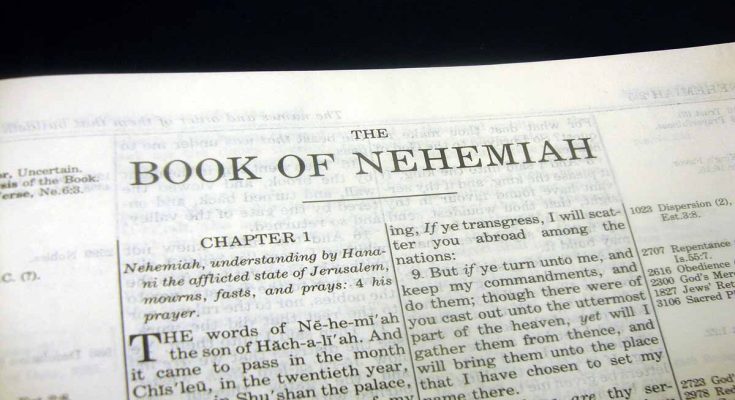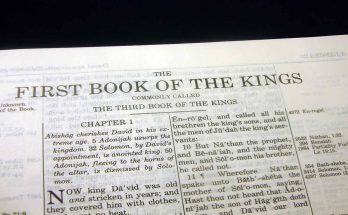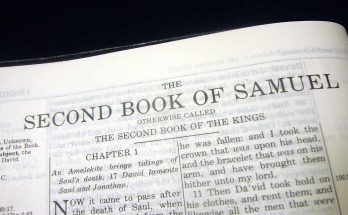Nehemiah saw a problem and was distressed. Instead of complaining or wallowing in self-pity and grief, he took action. He knew that God wanted him to motivate the Jews to rebuild Jerusalem’s walls, so he left a responsible position in the Persian government to do what God wanted. He knew God could use his talents to get the job done. From the moment he arrived in Jerusalem, everyone knew who was in charge. He organized, managed, supervised, encouraged, met opposition, confronted injustice, and kept going until the walls were built. Nehemiah was a man of action.
Nehemiah’s life is an example of leadership and organization. Giving up a comfortable and wealthy position in Persia, he returned to the fractured homeland of his ancestors and rallied the people to rebuild Jerusalem’s wall. In the face of opposition, he used wise defense measures to care for the people and to keep the project moving. To accomplish more for the sake of God’s kingdom, we must pray, persevere, and sacrifice, as did Nehemiah.
After the wall was rebuilt, Ezra read the law to the people, bringing about national repentance. Nehemiah and Ezra were very different people, yet God used them both to lead the nation. Remember, there is a place for you in God’s work even if you’re different from most other people. God uses each person in a unique way to accomplish his purposes.
Our book closes with the listing of the clans and their leaders, the dedication of the new wall of Jerusalem, and the purging of sin from the land. As you read this book, watch Nehemiah in action – and determine to be a person on whom God can depend to act for him in the world.
Writer
As written originally in the Hebrew language, Nehemiah, First Chronicles, Second Chronicles, and Ezra formed one unbroken book, written probably by the priest Ezra. Most conservative scholars, however, believe Nehemiah contributed some of the material that appears in the book which bears his name.
Date Written
Approximately 445-432 B.C.
Purpose of Nehemiah
Nehemiah is the last of the Old Testament historical books. It records the history of the third return to Jerusalem after the captivity, telling how the walls were rebuilt and the people were renewed in their faith.
Historical Setting of Nehemiah
The book of Nehemiah is set in that crucial time in Jewish history known as the post-exilic period. These were the years after the return of the covenant people to their homeland about 538 B.C. following 70 years of captivity in Babylon and Persia.
Theological Contribution in Nehemiah
Nehemiah is an excellent case study in courageous, resourceful leadership and the power of prayer. Against overwhelming odds, he encouraged the people to “rise up and build.” Their rapid completion of the wall had been an inspiration to countless Christians across the centuries who have faced the challenge of completing some major tasks to the glory of God.
Frequently Asked Questions (FAQ)
- What is the central theme of the Book of Nehemiah? The primary theme centers on restoration and rebuilding, focusing on Nehemiah’s leadership in reconstructing Jerusalem’s walls and the spiritual renewal of its people.
- Who was Nehemiah, and what was his role in biblical history? Nehemiah, a cupbearer to King Artaxerxes I, was chosen by God to lead the efforts in rebuilding Jerusalem’s walls after hearing about its desolation. His role extended beyond a mere construction project, encompassing spiritual and social reforms.
- What lessons can we learn from Nehemiah’s leadership? Nehemiah’s leadership demonstrates perseverance amidst opposition, fervent prayer, strategic planning, and a deep reliance on God’s guidance. His integrity, compassion, and commitment to the community provide timeless lessons for leadership today.
- How does the Book of Nehemiah relate to the concept of restoration and revival? Nehemiah’s story showcases God’s faithfulness in restoring what seemed irreparable. It highlights the importance of repentance, unity, and dedication to God’s Word as catalysts for spiritual revival and renewal in individual lives and communities.
- Are there parallels between Nehemiah’s mission and contemporary challenges? Absolutely. Nehemiah’s story echoes themes of resilience amid adversity, the need for community collaboration, and the call to address societal issues. It encourages believers to engage in God’s work and confront contemporary challenges with faith, prayer, and action.
Recommended Reading
- “Hand Me Another Brick: Timeless Lessons on Leadership” by Charles R. Swindoll This insightful book draws parallels between Nehemiah’s leadership and contemporary leadership principles. It explores Nehemiah’s methods, his reliance on God, and how these lessons can be applied to leadership in various spheres.
- “Ezra & Nehemiah: An Expositional Commentary” by James Montgomery Boice Boice offers a comprehensive and insightful commentary on Ezra and Nehemiah, providing historical context, detailed analysis, and practical applications for modern readers. It’s a valuable resource for those seeking an in-depth understanding of these books.
- “Nehemiah: Becoming a Godly Leader” by Gregory Brown This book offers a blend of commentary, study guide, and practical application. It focuses on Nehemiah’s character, leadership, and faith, offering lessons that apply to leadership development and personal spiritual growth.
Each of these books brings a unique perspective on Nehemiah’s story, providing valuable insights and practical applications for readers interested in exploring its themes and lessons further.
Click here to print or download the scripture outline “Nehemiah: Rebuild the Walls“




